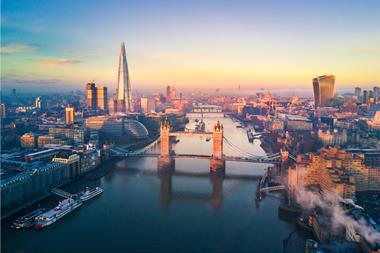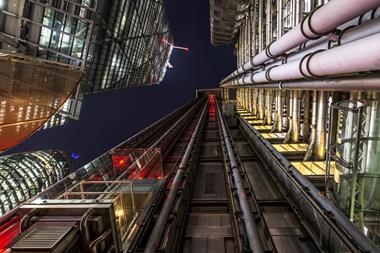Top executives are frequently slammed for drawing huge pay packets, but do the salaries of insurance industry executives reflect their performance?
It seems that a month does not go by without at least one top executive being slated for taking home a 'fat cat' pay packet. Only last month Royal & SunAlliance (R&SA) chief executive Andy Haste was caught in his shareholders' angry glare. He had picked up a hefty £1.38m in salary and bonuses, but shareholders expected a better performance. Haste's predecessor, Bob Mendelsohn, fared even worse, being slammed for his £2.5m golden handshake when he had presided over the virtual disintegration of R&SA's share price. But while not all directors' remuneration is excessive, the justification for some pay schemes is as clear as a winter's day. Ultimately, shareholders want results and if they don't get them, they can use their powers to oust chief executives and the rest of the board. So how do the listed insurance companies measure up? The table (opposite) shows that most chief executives have had an increase in their remuneration, despite presiding over a share price drop over the past year. The highest paid insurance sector executives are paid well over £700,000 with bonuses exceeding or closely matching their basic pay. But that is far lower than the pay packets of 'fat cat' chief executives in other sectors. In the pharmaceutical sector, JP Garnier chief executive of GlaxoSmithKline saw a pay and perks package increase of 13% to £2.8m in 2003. Understandably, shareholders revolted against his pay packet and against his potential £22m golden goodbye. Matthew Barrett, group chief executive of Barclays Bank, has an even bigger 'fat cat' salary. In 2003, Barrett was paid £3.07m, which consisted of £1.1m basic salary, £69,000 in benefits and a whopping £1.9m in annual bonuses. In the insurance sector, leading the remuneration pack is R&SA's Andy Haste, with his salary of £1.38m - not bad, for nine months' work. Haste received a basic salary of £450,000 in the first nine months, plus an annual bonus of £570,000. Haste has been in the chief executive seat for just over a year, but already shareholders are expecting better performance. Last month shareholders attacked R&SA for producing poor returns and lacking insurance expertise. Haste tried to intervene by insisting that there was no quick fix to the problem and that it would be a "long haul for the next three years".And shareholders have reason to be concerned. Since June 2003 R&SA's share price has dropped 42% from 115p to 81p. R&SA's shares rose only 0.5% to 81p at the end of May, a benchmark it had achieved at the beginning of May. Haste certainly has his work cut out for him if he doesn't want to follow in his predecessor's footsteps. R&SA's former chief executive, Bob Mendelsohn, came under much criticism after he walked away with a £2.5m pay packet after presiding over a collapse in the company's share price from 808p to 120p. In stark contrast R&SA's major rival, Aviva, shows a different picture. Patrick Snowball, head of Aviva's UK general insurance arm, earns considerably less than Haste, but the company has seen its share price rise by 14% over the last year.Even comparing the share price over three years doesn't do R&SA any favours. While Aviva dropped dramatically from over 1,000p per share to well below 500p a share in mid-2002, it has steadily recovered to just over the 500p mark for 2004. R&SA, meanwhile, has not seen the 200p mark since July 2002.Following close by on the remuneration ladder is Benfield Group's Graeme Chilton, with £1.33m. In its 2003 report, the company praises Chilton for having "expanded rapidly" and seeing an increase in revenue £50m to £300m. Chilton has been in office since 1996 and the company's turnover has increased by 83% over eight years. So perhaps Chilton's remuneration is merited. After all, the company's share price outperformed the FTSE All Share index for most of the year only to drop below it in November 2003. Only time will tell if this is a minor hiccup.A yearly snapshot cannot always give the bigger picture. Brit Insurance, for example, has seen a minor increase in its share price over the year. But consider the share price since 2001 and it becomes apparent that it has traded in the middle of the 70p to 90p range for quite some time. Even this year it is reluctant to move out of this zone. Still, its chief executive, Neil Eckert, who was appointed in 1999, saw an increase of 70% in his pay from 2002 to 2003.Specialist insurer Hiscox also has a bit of explaining to do on how it evaluates remuneration. Its chief executive, Bronek Masojada, has been with the company since 1993 and has seen a pay increase of 57% over the past year. The insurer has only outperformed the FTSE ASX Insurance Index (which it compares itself to in its annual 2003 report) for one year from December 1999 to December 2000. From December 1996 to December 2000, Hiscox's share price followed the index. But after June 2001 its performance declined in comparison.ABI head of investment affairs Peter Montagnon says: "The government introduced legislation so there would be more disclosure and more power to shareholders. Success should be rewarded but a minority can derail this. "If pay for directors increases without reference to company performance and the economy, the industry could find itself restricted or regulated, which is something we don't want."
How about the rest of us?The average basic salary of UK insurance professionals is £33,260, according to last year's Insurance Times salary survey - less than 10% of the £400,000 starting salaries of the insurance industry's top executives. Looking at bonuses the difference is even greater. The average bonus of an insurance worker is £3,420 - around 1% of Andy Haste's bonus.But with great rewards comes great responsibility. Many would ask whether working six days a week, 18 hours a day is much of a life. For many top executives, the stress ball may be their only source of comfort.





































